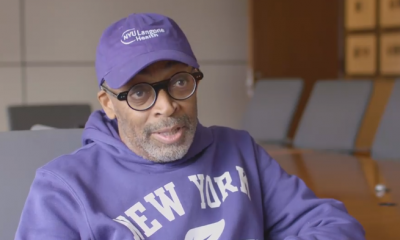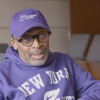Business & Health
Recent Diversity Reports Lift Veil on Poor Black, Latino Hiring Record at Tech Giants
Depending on who you are, you either were surprised or not very surprised that some of America’s largest and most high-profile tech companies — Google, Facebook and Twitter — have low levels of black and Latino employees, despite high adoption of their technology platforms by those minority groups.
According to the three companies’ 2014 Equal Employment Opportunity report — a detailed account of race and gender demographics of employees that companies are required to submit to the U.S. Equal Employment Opportunity Commission – out of a combined 41,000 Twitter, Facebook and Google employees, only 758, or 1.8 percent, are black. By comparison, African Americans represent 13 percent of the overall workforce, according to the U.S. Bureau of Labor Statistics.
Only two percent of employees at Facebook are black, according to the company’s 2014 EEO Report. At Google, only two percent of its more than 50,000 employees about black.
Apple appears to be among the closest to representing the U.S. black population in its employee base. However, that’s at least partly because its employment numbers includes its retail store staff. Apple and Ebay tie for the highest percentage of black employees on staff, at 7 percent.
The low diversity numbers are particularly troublesome for Twitter, which has a large black audience. According to recent research from the Pew Research Center, 27 percent of black adults use Twitter, compared to only 21 percent of white adults.
“Black Twitter,” a cultural identity on the social network that focuses issues of interest to the black community, has become so popular and influential in the court of public opinion that many mainstream media outlets, such as the Los Angeles Times, have hired reporters dedicated to covering the phenomenon.
Twitter has also been a platform for the grassroot “Black Lives Matter” movement, as activists and demonstrators have shared news and information about such issues as police brutality and the shooting massacre in Charleston, South Carolina.
But despite the high African-American activity on its network, of Twitter’s nearly 3,000 employees, only 35 men and 14 women are black, according to its 2014 EEO report. The report claims 93.8 percent of Twitter employees were either white or Asian.
The poor diversity numbers at the popular tech giants have caught the attention of civil and labor rights leaders, who say the staffs at the Silicon Valley companies should be more reflective of the entire U.S. population.
“We’ve challenged companies to discard the old model of exclusion,” said the Rev. Jesse L. Jackson Sr., who has been outspoken about diversity in the tech industry and has held meetings with tech CEOs through his Rainbow PUSH Coalition, which organized a summit in Silicon Valley last year. “It’s unsustainable, and I will continue to push Google – and the rest of Silicon Valley and the tech industry – to transform your leadership teams, supplier base, workforce and business partners to look like America.”
Jackson made his remarks at Google’s annual shareholder meeting at Google this year, which was attended by the company’s CEO Eric Schmidt.
Google’s recently released diversity numbers remained mostly static from a year earlier — the company is still 70 percent male and 60 percent white overall.
However, the company said it is committed to improving their diversity statistics and has pledged $150 million in programs designed to attract more female and minority employees this year. For example, the company has launched a program that embeds engineers at historically black colleges and universities (HBCUs), such as Howard and Hampton universities, to teach, mentor and advise on curriculum.
Other tech companies also have vowed to improve its diversity record and are funding initiatives design to develop black and Latino talent. By funding such programs, the tech giants hope to address a key barrier to their recruitment efforts — finding enough black and Latino talent in the tech industry to fill their open positions, as only 6.5 percent of recent graduates with a bachelors degrees in computer science were Hispanic and 4.5 percent were black. Meanwhile, 61 percent were white and 19 percent were Asian, according to 2012-2013 data from the Computer Research Association’s Taulbee Survey.
Chip maker Intel announced earlier this year that it would set aside $300 million by 2020 for hiring, training and promoting “underrepresented” racial minorities and women. Intel CEO Brian Krzanich also set a goal to have the country’s demographics fully represented in the Intel workforce and management by 2020. Additionally, Krzanich announced that managers’ pay will be tied to achieving the diversity goal.











